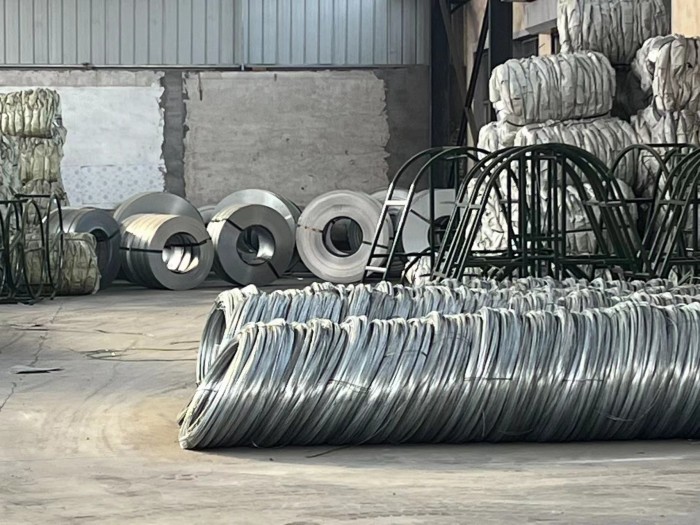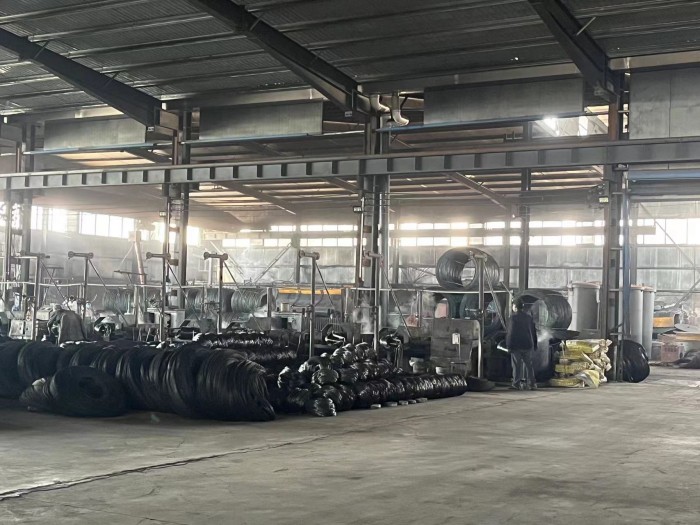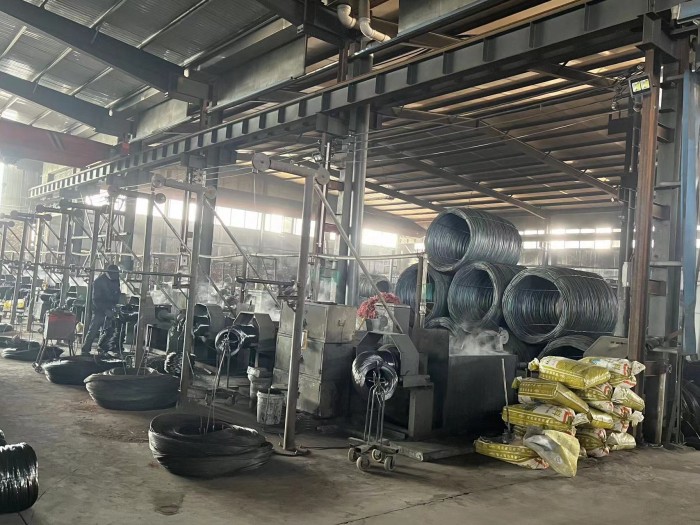The production process of Galvanized Wire involves several steps:
1. Wire Drawing: The process begins with wire drawing, where a large coil of steel wire is fed into a machine that pulls the wire through a series of dies to reduce its diameter to the desired size. This process also helps to improve the wire's surface finish.
2. Annealing: After wire drawing, the wire is typically annealed to relieve any internal stresses and improve its ductility. Annealing involves heating the wire to a specific temperature and then slowly cooling it down. 3. Galvanizing: The annealed wire is then passed through a galvanizing bath, which contains molten zinc. The wire is immersed in the bath, and the zinc adheres to its surface. The zinc coating provides protection against corrosion. 4. Cooling: After galvanizing, the wire is cooled to solidify the zinc coating. This can be done by passing the wire through a water bath or using air cooling methods. 5. Coiling and Spooling: The galvanized wire is then coiled or spooled onto large reels or spools, ready for further processing or distribution. 6. Quality Control: Throughout the production process, quality control checks are performed to ensure that the galvanized wire meets the required specifications. These checks may include measuring the wire diameter, checking the zinc coating thickness, and conducting various mechanical and chemical tests. 7. Packaging and Shipping: Once the galvanized wire passes the quality control checks, it is packaged according to customer requirements and prepared for shipping.
The application of galvanized wire is vast and diverse. Some common uses include:
1. Construction: Galvanized wire is widely used in the construction industry for various purposes such as reinforcing concrete structures, tying rebar together, and securing fences and barriers.
2. Agriculture: Galvanized wire is commonly used in agriculture for fence, animal enclosures, and support structures for plants and crops.
3. Electrical wiring: Galvanized wire is used for electrical wiring in residential, commercial, and industrial buildings. It provides a durable and corrosion-resistant solution for conducting electricity.
4. Automotive industry: Galvanized wire is utilized in the automotive industry for manufacturing various components such as springs, cables, and fasteners.
5. Art and crafts: Galvanized wire is often used in art and crafts projects for creating sculptures, jewelry, and decorative items.
6. Packaging: Galvanized wire is employed in packaging applications for securing and bundling products together.
7. Gardening and landscaping: Galvanized wire is used for creating trellises, plant supports, and garden structures.
8. Marine industry: Galvanized wire is used in marine applications due to its resistance to saltwater corrosion. It is used for rigging, boat building, and securing equipment.
9. DIY projects: Galvanized wire is commonly used by DIY enthusiasts for various projects such as hanging pictures, creating plant hangers, and repairing household items.
10. WIRE MESH and netting: Galvanized wire is used to manufacture wire mesh and netting for various applications, including fencing, animal enclosures, and filtration systems.
It is important to note that the specific details of the production process may vary depending on the manufacturer and the intended application of the galvanized wire.



